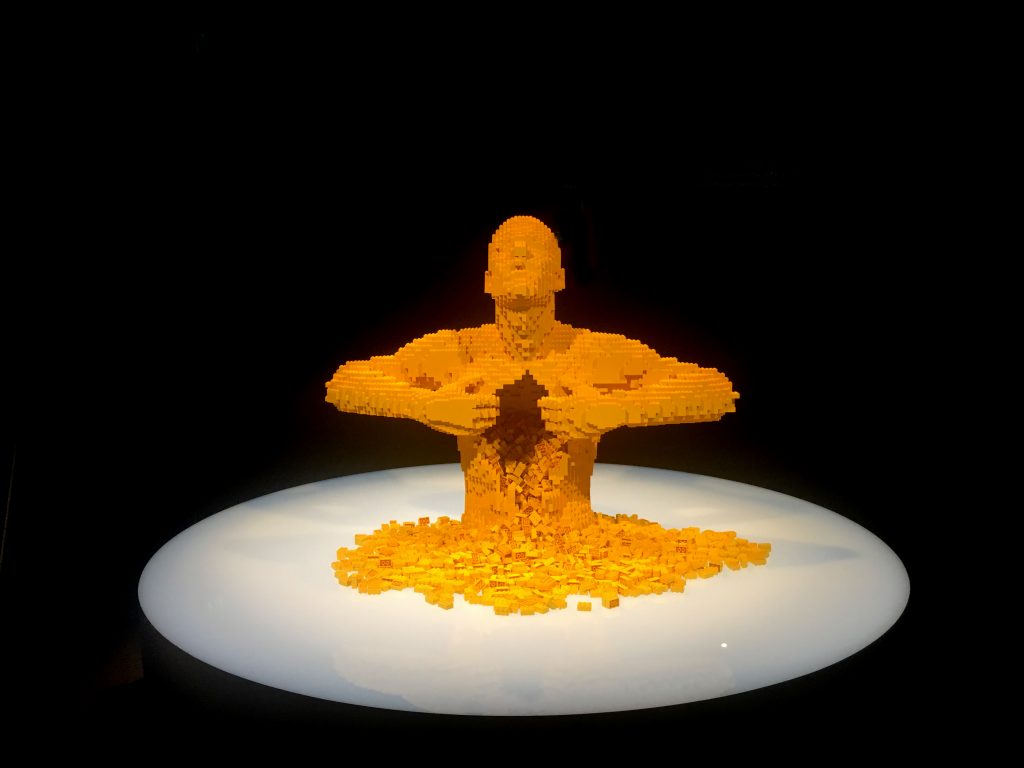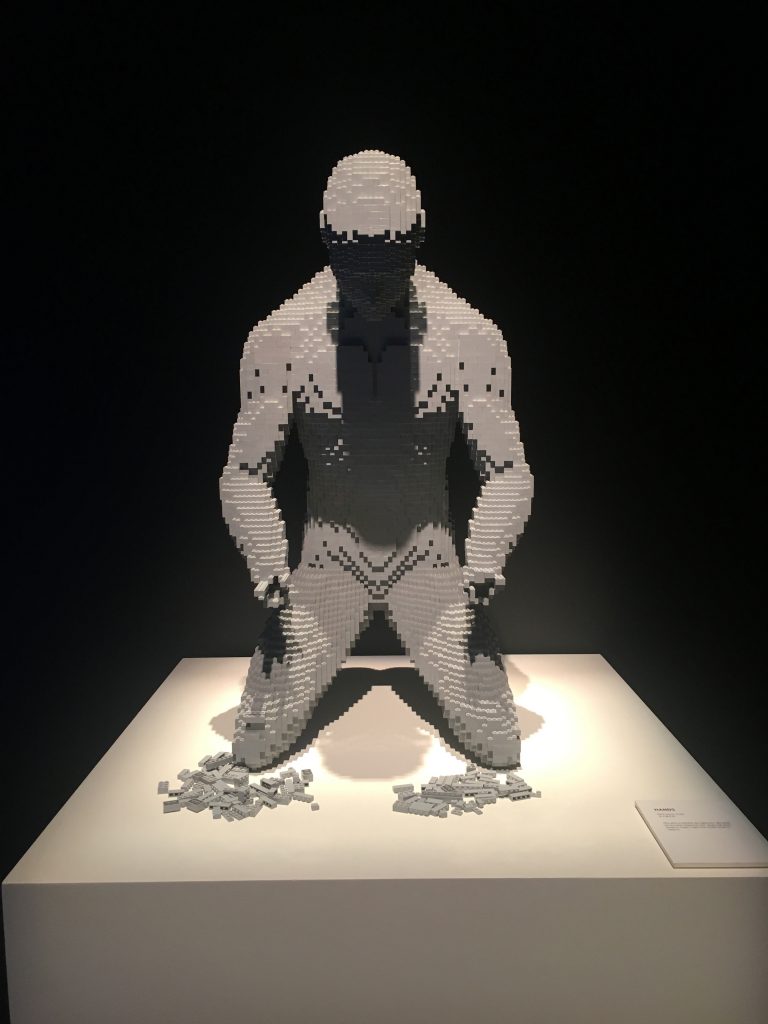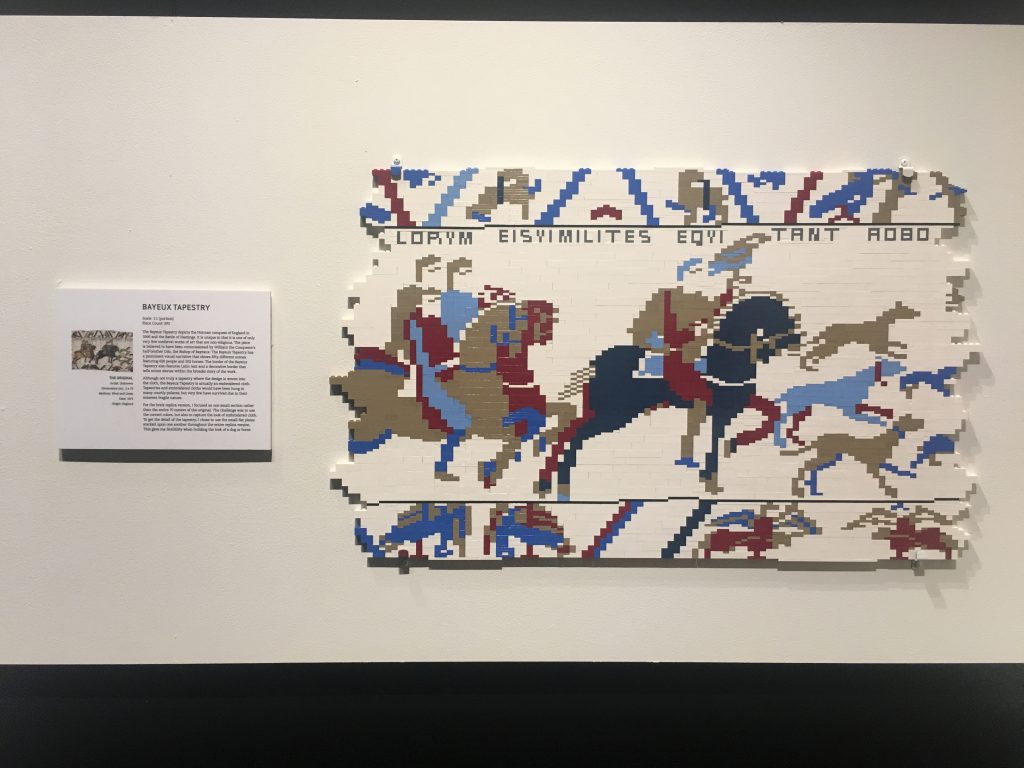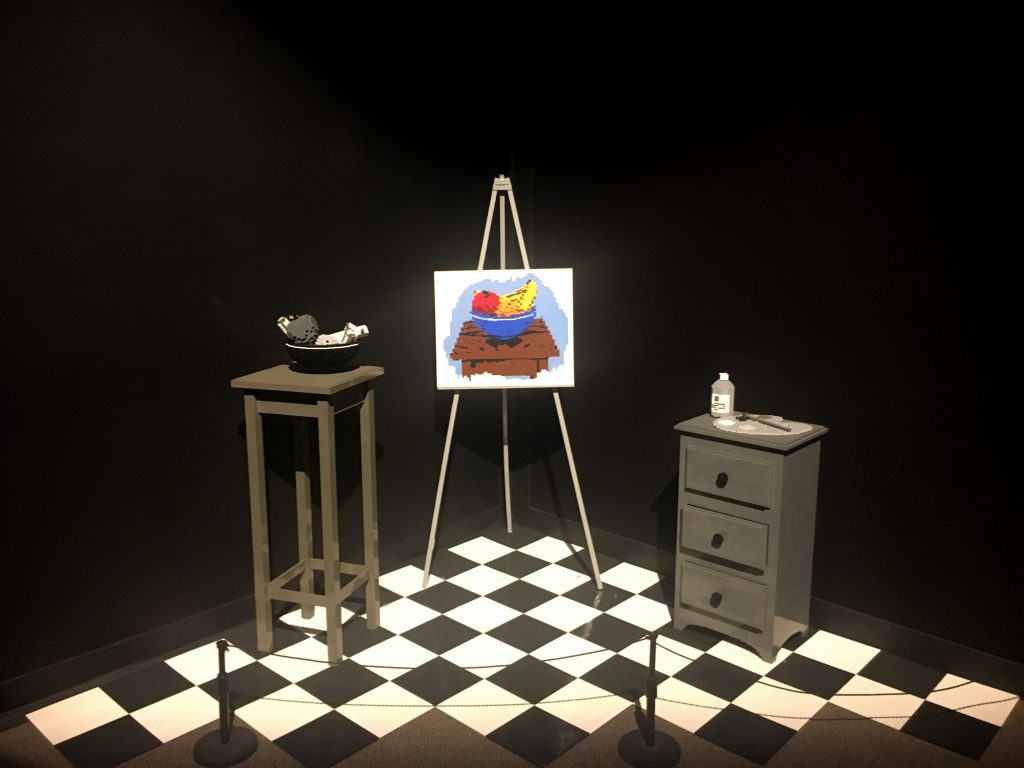“Art of the Brick” has been heralded by CNN as one of the world’s “must see exhibitions”. Admittedly, this seems a bit ostentatious—how impressive can a series of LEGO models really be? If a series of plastic bricks strategically stuck together can evoke sorrow, laughter, admiration, and a deep reflection of the mysteries of life, then the “Art of the Brick” is a massively impressive collection that is impossible to step away from uninspired. The moment they step inside, the viewer immediately develops a personal connection to this exhibit by watching a short video of Nathan Sawaya explaining his art. Sawaya says that he always loved LEGOs growing up and even brought them to college with him at NYU, where he studied art. After his undergrad, he went on to law school. Nathan never lost his passion for building with LEGOS or art, however, and after working all day in a boardroom, he found his creative outlet by building LEGO sculptures. What started as a hobby became a full-time job as he began to receive commissions from around the world. As the video ends, Sawaya talks about his inspiration; he ends with the words “Art is necessary. Art can be anything. It all starts with one brick”. After this presentation, the audience migrates to the next section. It is clear that Sawaya’s NYU art education has not gone to waste.

On two opposing corners of the walls are LEGO “reliefs” that are placed side-by-side that are depictions of famous artworks, from the Lascaux Cave Paintings to Klee’s “New Harmony.” Each piece was complemented by a description of the historical value of the art it was modeled after and a statement from Sawaya about the choices he made to recreate the work. In a replica of the Symbol of St. John from “The Book of Dimma,” Sawaya imitates the look of the woven borders by placing LEGOS on top of each other, resulting in depth rather than a flat surface. In contrast, Sawaya’s version of Muqi’s “Lotus and Swallow”, conveys balance and tranquillity, is perfectly a perfectly smooth surface. As the viewer continues through this section, they notice other creative versions of paintings, sculptures, and even a stained glass window. Sawaya embraces a global appreciation of art history, featuring pieces from around the world, from Chile, to Korea, to Egypt, and Nigeria. This is a departure from the emphasis of the West found in many overviews of art history.

In the following exhibits, Sawaya demonstrates a fine synthesis of technical skill and emotional expression. He makes a tactful transition from his homage to fine art to his original contributions. From the Sculpture Garden, the viewer enters the section “Metamorphosis.” Here there is an immediate and obvious mood shift highlighted by the lighting and the content. Soft blue lights glide in swirls across the floor and accentuate the centerpiece, “Swimmer,” featuring a figure immersed in a pile of blue LEGOs that imitate the effects of water astonishingly well for an angular medium. Other pieces in this section include a self-portrait and a depiction of the artist’s worst nightmare. From here, the content transitions from the personal to a more general series of expression, including sections titled: “The Human Condition”, “Through the Darkness”, and “The Artist’s Studio.” This series encompasses almost every human experience and emotion that range from joy, celebration, growth, humor, creativity and love to more darker themes such as anger, fear, isolation, shame, and death. Throughout these sections, Sawaya pushes the accessibility in his medium. These artworks are powerful and relatable, it’s easy to forget that they are made out of a plastic children’s toy.

The last two sections show that while Sawaya has mastered his craft, he is still experimenting and exploring the medium. The section “In Pieces” features a collaboration of Sawaya’s LEGO sculptures subtly imposed into photos that reference American minimalist postcards. This body of work is more conceptual and experimental. The LEGO sculptures created a pixelated effect in an otherwise sharp image that makes the viewer have to look twice. Not only has Sawaya flirted with mixed media, he has also used his LEGO masterpieces to create his own street art, featured in the next section “Homecoming.” The piece is called “Hugman,” a life-size human figure made from multicolored blocks that Sawaya leaves around cities hugging telephone poles, trees, fence posts, and even bicycle tires. Hugman is meant to inspire the viewers to embrace others and themselves.

The real magic happens at the end of the exhibit, in the Brick Lab. Here, dozens of people, young and old, are busy at long tables making their own creations. On the walls are posters with tips on how to make certain forms and shapes. There are two shelves that showcase all of the art that previous visitors have made. Standing in the Brick Lab, it becomes apparent just how sensational Sawaya’s medium is. There is the feeling of the hard plastic edges as little fingers manipulate them. There is the clicking and snapping of all the bricks connecting, and finally there are ideas that have been brought to life for everyone to see. Sawaya has gone above and beyond to inspire thousands of people to create and to play. This engagement and enthusiasm that the exhibit generates in the hearts of dozens of children and adults alike affirm that this exhibit is absolutely necessary to experience in order to see how something as simple as a plastic brick can be pushed to its emotional, technical, and historical extremes.





